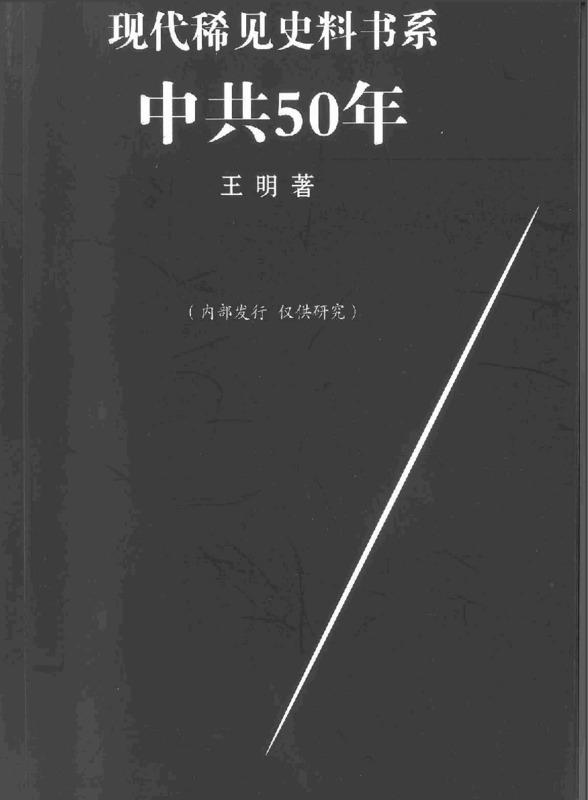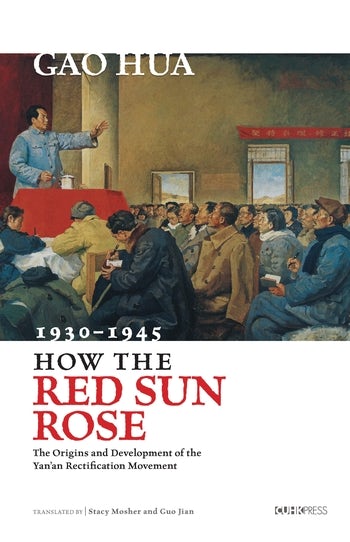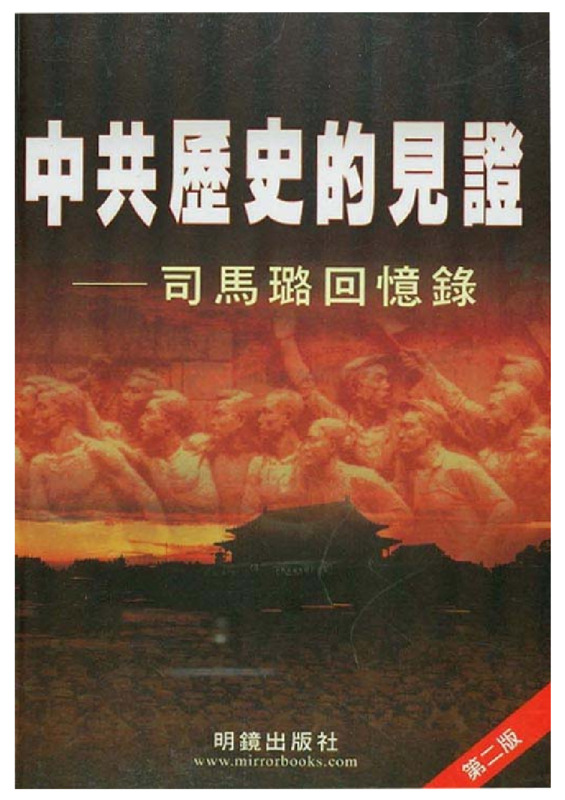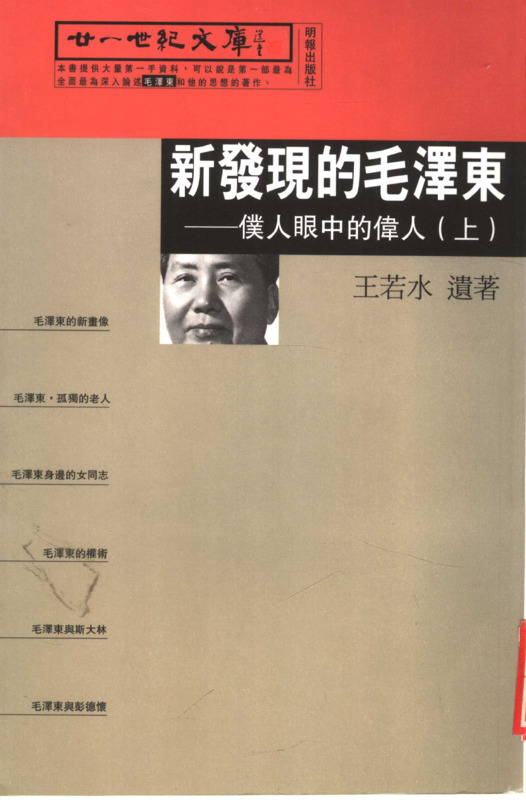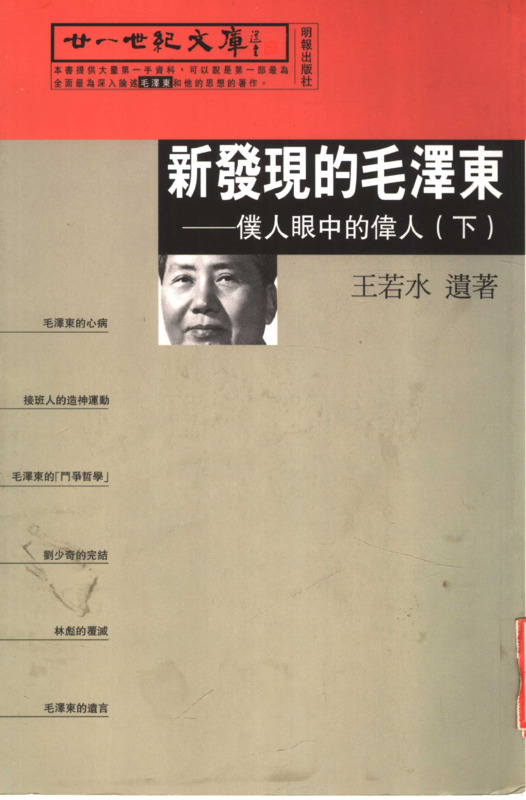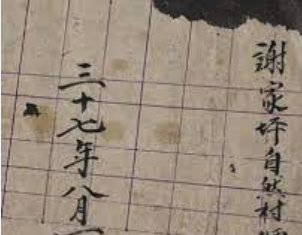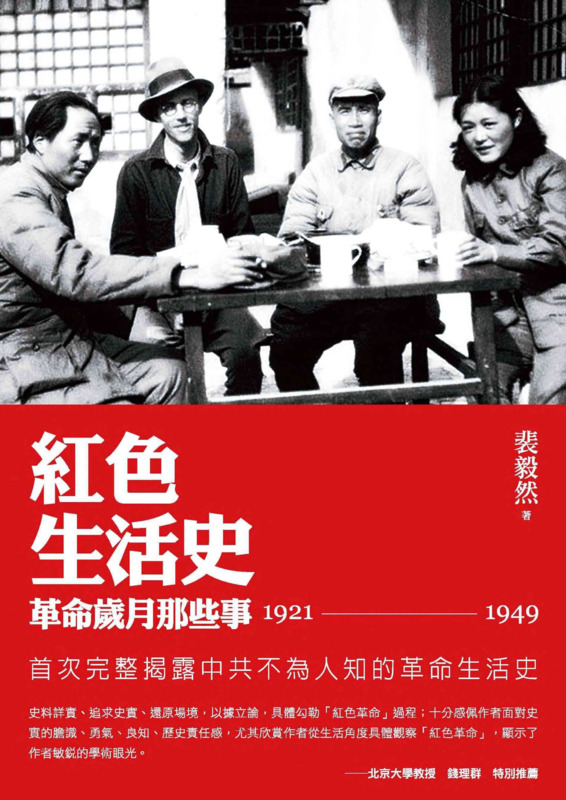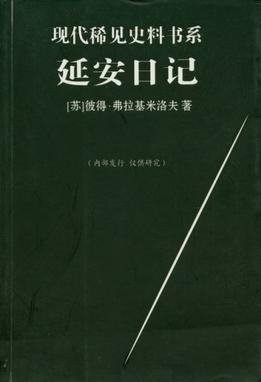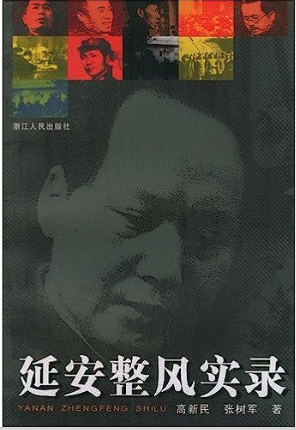Explore the collection
Showing 14 items in the collection
14 items
期刊
Istiqlal mejmu’esi/The Independence
“Istiqlal” mejmu’esi 1930-yillarning bashliridiki Sherqiy Türkistan milliy inqilabi we uning netijiside qurulghan Sherqiy Türkistan Islam Jumhuriyiti heqqide birinchi qol tarixiy menbe bergüchi siyasiy, ijtima’iy, iqtisadiy, diniy, edebiy we tenqidiy mejmu’edur.
20-esirning aldinqi yérimidiki Sherqiy Türkistanning siyasiy we ijtima’iy tarixi tetqiqatida Uyghurlarni asas qilghan yerlik xelqlerning aghzaki tarix matériyalliri hemde yazma menbelirige étibar bérilmey keldi. Uyghurlarni asas qilghan yerlik milletler 1930-we1940-yillardiki Sherqiy Türkistanning siyasiy tarixida asasliq rol alghuchi ijtima’iy topluq hésablansimu, emma meyli kommunist Xitay istilasidin kéyinki Xitay hökümet tarixshunasliqida bolsun yaki xelq’aradiki Ottura Asiya tetqiqatida bolsun, ularning öz til-yéziqidiki tarixiy menbeler hemde ularning éytimidiki yerlik tarixchiliq en’enisi izchil halda nezerdin saqit qilinip keldi. Téximu éniqraq qilip éytqanda, Uyghurlarning hazirqi zaman tarixi ularning öz éytimida emes, belki Xitay hökümet tarixshunasliqining ramka ichidiki éytimida yézilip keldi; Ularning öz béshidin ötküzgen tarixiy kechürmishliri ularning öz tili, öz yéziqi we öz hékayiliridiki éytimlarda emes, belki bashqilarning tili, yéziqi we hékayiliridiki wastiliq bayanlarda éytilip keldi. Shundaq, ularning özlirini ipade qilishigha imkaniyet bérilmidi, ular peqet bashqilar teripidin ipade qilinishqa mejbur boldi.
“Istiqlal” mejmu’esi 1930-yillardiki Sherqiy Türkistan milliy inqilabi tarixidiki del mushu boshluqni toldurghuchi Uyghur til-yéziqidiki yigane menbelerning biridur. Eslide mezkur mejmu’eni her ikki heptide bir qétim neshir qilip tarqitish pilanlan’ghan bolsimu, emma 1933-1934-yillardiki Rayonning murekkep we turaqsiz siyasiy weziyiti seweblik, peqetla 1-2 qoshma sani neshir qilinipla toxtap qalghan. Bügünki künde mezkur mejmu’ening esli nusxasini Xitaydiki, jümlidin Shinjang Uyghur Aptonom Rayonidiki herqandaq bir arxip yaki kutupxanidin tapqili hem körgili bolmaydu. “Istiqlal” mejmu’esining birqanche dane esli nusxasi nöwette Seudi Erebistanidiki Türkistan Kutupxanisida, Shiwétsiyediki Lund Uniwérsiteti Kutupxanisi Yarring Yighmisi (Gunnar Jarring Collection)da, Shiwétsiye dölet arxipi (Riksarkivet) da we Istanbuldiki Shiwétsiye Tetqiqat Inistituti (Swedish Research Inistitute) ning kutupxanisida saqlanmaqta.
“Istiqlal” mejmue’si 1933-yilining ikkinchi yérimida Qeshqerde qurulghan Sherqiy Türkistan Istiqlal Jem’iyitining neshir epkari süpitide neshir qilin’ghan. 1931-yili Qomuldin bashlan’ghan Sherqiy Türkistan milliy inqilabi 1933-yilining bashlirigha kelgende jenubqa kéngiyip, aldi bilen Xoten wilayiti yerlik qozghilangchilarning qoligha ötken we Xoten Islam Hökümiti jakarlan’ghan. Shu yili 5-aylarda Qeshqer wilayitimu yerlik qozghilangchilarning qoligha ötüp, Qeshqerde birlikke kelgen musteqil Sherqiy Türkistan Jumhuriyiti qurushning jiddiy teyyarliqi élip bérilghan. 1933-yili 8-ayda Qeshqerde bir qisim yerlik inqilabchi serxillar bash qoshup, aldi bilen Sherqiy Türkistan Istiqlal Jem’iyiti qurghan we musteqil Sherqiy Türkistan Jumhuriyiti qurushning teyyarliqigha jiddiy kirishken. “Istqiqlal” mejmu’esi mezkur jem’iyetning neshir-epkari süpitide qurulghusi Sherqiy Türkistan Islam Jumhuriyiti üchün siyasiy we nezeriyiwiy asas tiklesh meqsitide neshir qilin’ghan.
“Istiqlal” mejmu’esining 1933-yilliq tunji sani (1-2-qoshma sani)da mezkur mejmu’ening meqset-nishani, Sherqiy Türkistan Istiqlal Jem’iyitining nizamnamisi, Qeshqerde Sherqiy Türkistan Islam Jumhuriyitining qurulushi we hökümet bayannamisi, hökümet teshkili we kabént ezaliri, Sherqiy Türkistan Islam Jumhuriyitining asasiy qanuni, Sherqiy Türkistan milliy inqilabining qisqiche tarixi, Sherqiy Türkistan xelqige qilinghan chaqiriq, Chet’ellerdiki Türk-musulman qérindashlargha muraji’et, Sherqiy Türkistan dölitining yéngi pul-mu’amilisi qatarliq höjjet xaraktérliq muhim matériyallar bérilgen. Mejmu’ening kéyinki bölikide Sherqiy Türkistandiki eng yéngi weziyet we milliy inqilab xewerliri hemde Qeshqer ehwali tonushturulghan. Alahide tekitleshke tégishlik yéri shuki, mejmu’ening axiriqi sehipiliride Sherqiy Türkistan Edebiyatigha béghishlan’ghan mexsus maqalilar, she’irlar, chaqiriqlar, mektep balilirining naxsha tékistliri we Sherqiy Türkistan marshi bérilgen.
Mezkur mejmu’ediki höjjet xaraktérliq matériyallar 1933-yilidiki Sherqiy Türkistan Islam Jumhuriyiti tarixini tetqiq qilishta birinchi qol muhim menbe hésablinidu. Bu mejmu’ege bésilghan Sherqiy Türkistan Islam Jumhuriyitining Asasi Qanuni shu mezgildiki musulmanlar dunyasida küchlük tesir peyda qilghan. Eyni waqitta Yawropada siyasiy pa’aliyet élip bériwatqan Türkistan muhajirliri Qeshqerde neshir qilin’ghan “Istiqlal” mejmu’esidiki bir qisim maqale we höjjetlerni tashqiy dunyagha tonushturghan. “Istiqlal” mejmu’esining tunji sanigha bésilghan Sherqiy Türkistan Islam Jumhuriyitining Asasiy Qanunining toluq tékisti Fransiye paytexti Parizhda neshir qiliniwatqan “Yash Türkistan” mejmu’esining 1934-yilliq 3 sanigha uda ulap bésilghan.
“Istiqlal” mejmu’esining ich muqawisigha “bu mejmu’ening shu’ari dinda, tilda, dilda, pikirde we ishta birlik” dep yézilghan. Bu shu’ar 19-esirning axiriqi charikide Rusiye musulmanliri arisida bashlan’ghan jeditizm herikitining bayraqdari Ismail Gaspirinski (1851-1914) teripidin otturigha qoyulghan “tilda, pikirde we ishta birlik” dégen meshhur chaqiriqtin élin’ghan.
“Istiqlal” mejmu’esi Hijriye 1352-yilining Ramizan éyida, Miladiye 1933-yilining 11-12-ay mezgilide Qeshqerde neshir qilinip tarqitilghan. Mezkur mejmu’ening bash muherriri Muhemmed Emin Sufizade bolup, u 20-esirning bashlirida Tashkent, Buxara, Istanbul we Misirda oqughan. 1920-yillarda Rusiye Türkistanida Bolshéwiklar hakimiyitige qarshi qurbashilar (basmichilar) herikitige qatnashqan. 1930-yillarning bashliridiki Sherqiy Türkistan milliy inqilabi mezgilide neshriyatchiliq we teshwiqat ishlirida aktip rol oynighan. Qeshqer we Aqsu qatarliq jaylarda oqutquchi bolup, zamaniwiy milliy mekteplerni rawajlandurushta hesse qoshqan. 1937-yili Sherqiy Türkistan milliy inqilabi meghlub bolghandin kéyin qolgha élinip, Ürümchide militarist Shéng Shisey türmiside öltürülgen.
“Istiqlal” mejmu’esining tili klassik Türki-Uyghur (Chaghatay) tilidin hazirqi zaman Uyghur tiligha ötüsh mezgilidiki ötkünchi dewrge mensup bolup, uningdiki maqale-eserler til, yéziq, imla we ipadilesh jehettin pütkül Türki tilliq xelqler chüshineyleydighan ortaq edebiy tilda yézilghan. Bu mejmu’ediki maqale-eserler hazirgha qeder Xitay, In’giliz yaki bashqa tillargha terjime qilinmighan.
The irregular periodical <i>Istiqlal (The Independence)</i> is a firsthand historical source concerning the national independence movement that erupted in East Turkestan in the early 1930s and its direct outcome — the establishment of the East Turkestan Islamic Republic (ETIR) on November 12, 1933. It is a valuable collection of documents that provides critical, self-reflective content about the political, social, economic, religious, and cultural environment of East Turkestan during that era.
In the study of China's frontier history during the first half of the 20th century, particularly in the field of modern political and social history of Xinjiang, oral histories and written records of local people, primarily the Uyghurs, have long been overlooked. Despite the fact that Uyghurs and other indigenous people played a central role as the main social actors in Xinjiang's political history during the 1930s and 1940s, both official Chinese historiography after the rule of the Chinese Communist Party and international scholarship on Xinjiang have consistently ignored historical documents in the languages of Xinjiang's indigenous peoples and their native historiographical traditions. To be precise, modern Uyghur history is not narrated by the Uyghurs themselves but is framed within China's official historical narrative. Their historical experiences are not expressed through their own language, script, and stories but are instead conveyed through the language, script, and narratives of others.
<i>The Independence</i> anthology is a rare historical document in the Uyghur language that fills this gap. According to the original plan of its publishers, Independence was intended to be issued biweekly. However, due to the complex and turbulent political situation in southern Xinjiang during 1933-1934, only the combined first and second issues were published before its discontinuation. Today, the original copies cannot be found in any archives or libraries within China, including the Xinjiang Uyghur Autonomous Region. A small number of surviving original copies are held in the private library of Rahmetulla Turkistani, a Saudi Arabian scholar of Uyghur descent, the Gunnar Jarring Collection at Lund University Library in Sweden, the National Archives of Sweden (Riksarkivet), and the library of the Swedish Research Institute in Istanbul, Turkey.
The PDF version offered here came from the website of <a href="https://www.uyghurkitap.com/">"UyghurKitap" (UyghurBook)</a>. The founders of UyghurKitab website scanned the book and converted it into PDF with the permission of the Library of Rahmetulla Turkistani. CUA got permission from the UyghurKitab to publish it on our website.
Published in Kashgar in the second half of 1933 as the official publication of the East Turkestan Independence Association, the anthology emerged during a pivotal time. The East Turkestan national independence movement, which began in Qomul (Hami in Chinese) in 1931, had spread to various oases around the Tarim Basin by early 1933. The main southern East Turkestan oasis cities such as Hotan, Kashgar, and Aksu were successively brought under the control of local insurgent populations. Various rebel forces began preparations to establish a unified East Turkestan Republic. In August of that year, local rebel elites formed the East Turkestan Independence Association to actively prepare for the founding of the Islamic Republic. The Independence anthology served as the theoretical mouthpiece of this association, aiming to awaken the populace and lay the political and ideological foundation for the forthcoming Islamic Republic of East Turkestan.
The first combined issue of <i>The Independence</i> anthology (Issues 1-2, 1933) includes the following core content:
- The editorial mission and the charter of the East Turkestan Independence Association (ETIA)
- The declaration of the East Turkestan Islamic Republic (ETIR) established in Kashgar
- The composition of the government of the East Turkestan Islamic Republic and the list of cabinet members
- The full text of the Constitution of the East Turkestan Islamic Republic
- A brief history of the East Turkestan national independence movement
- A Letter to the People of East Turkistan and A Letter to Overseas Turkic Muslim Brothers
- An announcement regarding the issuance of new currency by the East Turkestan Islamic Republic
In the later sections, updates on the latest developments in East Turkistan, trends in the independence movement, and reports from the Kashgar region were published. Notably, the final section of the publication featured a dedicated East Turkestan literature column, including essays, poetry, manifestos, ethnic folk songs, and the lyrics to the East Turkestan March.
The documents published in the inaugural issue are indispensable historical materials for a comprehensive study of the East Turkestan Islamic Republic (1933-1934), which holds special significance in 20th-century Uyghur political history. The Constitution of the East Turkestan Islamic Republic, published in the anthology, had a profound impact on the Islamic world at the time. Political activists from Russian Turkestan (or Soviet Central Asia), who were in exile in Europe, introduced parts of the publication and its documents to the international community, including the full text of the Constitution of the East Turkestan Islamic Republic. This was subsequently reprinted over three consecutive issues in 1934 in the Paris-based magazine <i>Yash Türkistan (Young Turkistan)</i>.
The cover of the anthology bears the motto: "Unity in Religion, Language, Heart, Thought, and Action." This slogan is derived from the famous 19th-century initiative "Unity in Language, Thought, and Action," proposed and widely disseminated by Ismail Gasprinsky (1851-1914), a leader of the Russian Tatar Jaditism Movement (Muslim reform movement), in his periodical <i>Terjuman</i>.
<i>The Independence</i> anthology was published in Kashgar during the month of Ramadan in the Islamic year 1352 (November-December 1933 AD). Its editor-in-chief, Muhammed Emin Sufizade, had studied in Tashkent and Bukhara (present-day Uzbekistan), Istanbul (Turkey), and Cairo (Egypt) in the early 20th century. In the 1920s, he participated in the Basmachi movement against Bolshevik rule in Western Turkestan (Russian Central Asia). In the early 1930s, he dedicated himself to propaganda and publishing efforts for the East Turkestan independence movement, founding modern national education schools in Kashgar and Aksu. Following the failure of the East Turkestan independence movement in 1937, he was arrested by the warlord Sheng Shicai and executed in a prison in Urumqi.
The language of the publication largely reflects the transitional form of classical Turkic Chagatay literature into modern Uyghur, using a common written language comprehensible to readers across the Turkic language world. More specifically, the vocabulary, orthography, grammatical structure, and style of expression in the anthology embody the characteristics of early 20th-century Uyghur written language. It should be noted that the content of this anthology has not yet been translated into Chinese, English, or other languages.
Book
At the Crossroads of History
This book is Gao Hua's next masterpiece after *How the Red Sun Rose*. It entails a selection of papers published by the author between 1988 and 2004, covering the fields of Republican history, Communist Party history, and contemporary Chinese history. It captures the historical interaction between the present and the past. Gao reflects deeply on the far-reaching Chinese Communist Revolution. With a rigorous and empirical research methodology, he sketches a complex and colorful picture of history, presenting the multiple facets of twentieth-century China's history.
Book
Fifty Years of the Chinese Communist Party
The author Wang Ming was an early member of the Communist Party of China (CCP) and the first of the "28 and a half Bolsheviks," who lost power after the Yan'an Rectification and were gradually marginalized by Mao. After the Yan'an Rectification, the Internationalists, led by him, lost power in the party. He was gradually ostracized by Mao Zedong, who expatriated him to the Soviet Union in 1956. In his book, Wang Ming recounts his decades-long feud with Mao. It provides a fascinating insight into the early history of the CCP.
Book
How the Red Sun Rose
Originally published in Hong Kong in Chinese in 2000, Gao Hua’s epic description of an early Communist Party campaign against dissent describes a pattern of thought reform and control that would hold true for decades to come. Written despite official harassment and Gao’s failing health, How the Red Sun Rose is a touchstone for China’s unofficial history movement. It was translated into English in 2019 and published by Columbia University Press. Purchase here: https://cup.columbia.edu/book/how-the-red-sun-rose/9789629968229.
Book
Mao: The Unknown Story
This book presents the dramatic life of Mao Zedong, revealing a wealth of unheard-of facts: why Mao joined the Communist Party, how he came to sit at the top of the Chinese Communist Party, and how he seized China step by step. Writers Jung Chang and her husband Jon Halliday took ten years to complete this book, interviewing hundreds of Mao's relatives and friends, Chinese and foreign informants and witnesses who worked and interacted with Mao as well as dignitaries from various countries.
Purchase link:https://www.amazon.com/Mao-Story-Jung-Chang/dp/0679746323.
Book
Memoirs of Sima Lu: A Witness to the History of the Chinese Communist Party, The
Sima Lu (1919-2021) was an expert on the history of the Chinese Communist Party. He joined the Chinese Communist Party in 1937, then was politically persecuted in Yan'an, left it, and was expelled from the Party in 1941. In 1952, Sima Lu published “Eighteen Years of Struggle” in Hong Kong, writing about his tortuous journey from defecting to the Communist Party to his awakening and eventual choice of freedom. It became a sensation. He has made in-depth special studies on several leading figures of the CCP, such as Qu Qubai and Zhang Guotao. His memoir, “Witness to the History of the CCP”, is divided into three chapters according to its contents: the first is about his personal experience, the second about the first generation of CCP figures, and the third is devoted to the struggle between Mao Zedong and Zhou Enlai.
Book
Newly Discovered Mao, The: Volume I
Author Wang Ruoshui spent his early years studying philosophy at Peking University. He served as deputy editor-in-chief of the Communist Party newspaper “People's Daily” and was able to participate in high-level ideological discussions, gaining a deep understanding of Mao Zedong as a person and of his thought. He was one of the rare intellectuals within the CCP system who had an independent personality as well as the ability to think for himself. After his death from cancer, his wife, Feng Yuan, helped put together this posthumous book. Published by Ming Pao Press in 2002, it has been described as "the first and most comprehensive and in-depth discussion of Mao Zedong and his thought."
Book
Newly Discovered Mao, The: Volume II
Author Wang Ruoshui spent his early years studying philosophy at Peking University. He served as deputy editor-in-chief of the Communist Party newspaper "People's Daily" and was able to participate in high-level ideological discussions, gaining a deep understanding of Mao Zedong as a person and his thought. He was one of the rare intellectuals within the CCP system who had an independent personality as well as the ability to think for himself. After his death from cancer, his wife, Feng Yuan, put together this posthumous book. Published by Ming Pao Press in 2002, it has been described as "the first and most comprehensive and in-depth discussion of Mao Zedong and his thought.
Article
Poppies under the Red Sun: The Opium Trade and the Yan'an Model
In the 1990s, history scholar Chen Yongfa made a fundamental study of the opium economy two decades before the founding of the CCP and completed a monograph, "Poppies under the Red Sun: The Opium Trade and the Yan'an Model". Since then, more and more research articles have been written on the subject, and new information has appeared. Subsequently, the phenomenon of the opium economy of the CCP's Yan'an regime has also became an important field of study.
Book
Red Life History - The Revolutionary Years (1921-1949)
Professor Pei Yiran's book is the first complete revelation of the untold revolutionary history of the CCP. The book covers many important points in the history of the CCP, including the use of Soviet rubles to build the party, the landlords fundraising campaign, and the love life of Mao Zedong and Jiang Qing, among subjects.
Book
The Vladimirov Diaries: Yenan, China 1942~1945
The author of The Vladimirov Diaries: Yenan, China, 1942~1945, Peter Vladimirov (Sun Ping in Chinese) was a Soviet citizen. The book was first published in the 1980s by Oriental Publishing House and reprinted in March 2004. Peter traveled to Yan'an from 1942 to 1945 as a liaison officer of the Comintern and a correspondent for the TASS news agency. He kept a diary of the political, economic and cultural aspects of Yan'an, including its opium economy. Against the background of the relationship between the CCP and the Soviet Union during the War of Resistance against Japanese Aggression, the book describes the CCP's Rectification Movement and the Seventh National Congress. It also comments on the CCP's contact with the U.S. Military Observer Group stationed in Yan'an at the time and on the relationship between the CCP and the Kuomintang.
Book
Yan'an Rectification
The Rectification Movement took place in Yan'an, North Shaanxi Province, in the 1940s. This book, written by scholars within the Chinese official system, attempts to chronicle the ins and outs of the Rectification Movement in Yan'an and the base areas, analyzing its causes and the logical development of its results. It is rich in information that is only found here. This book was published by Zhejiang People's Publishing House in 1999.
图书
Tangni Kütüp/Awaiting for the Dawn
(English follows) “Tangni Kütüp” namliq bu eslime épik dastan uslubida, yeni she’iriy shekilde yézilghan eser bolup, 1930-yillardin 1980-yillarghiche bolghan Sherqiy Türkistan (Xinjiang)ning siyasiy we ijtima’iy tarixini xelq éytimidin chüshinishte muhim ehmiyetke igidur.
Aptor Abduqadir Zununi Uyghurlarning 20-esirdiki siyasiy we ijtima’iy hayatida yüz bergen zor weqelerge shahit bolghan, shundaqla shu jeryandiki nurghun ishlarni öz béshidin ötküzgen shexstur. U 1940-yillardin bashlap Sherqiy Türkistanda neshir qilin’ghan Uyghur tilidiki asasliq gézitlerning tehriratida tehrir we bash muherrir bolup ishligen. Yene bir tereptin edebiy ijadiyet bilen shoghullinip, Uyghurlar hayatida yüz bergen zor ijtima’iy özgirishler we siyasiy heriketlerni yéqindin közetken.
Bu eslime bir tarixiy shahitning közidin Sherqiy Türkistanning yérim esirlik siyasiy we ijtima’iy hayatini hökümet meydanidin emes, belki shu tarixni yaratquchi awam xelqning éytimidin bayan qilip bergen. Mezkur eslime aptor tughulghan 1919-yilidin bashlap, tarixiy xironologiyelik tertip boyiche 1920-yillardiki Sherqiy Türkistanning jem’iyet ehwali, 1930-yillarning bashlirida yüz bergen Sherqiy Türkistan inqilabi we Uyghurlarning milliy musteqilliq heriketliri, Xitay militarist Shéng Shiseyning 1930-yillarning ikkinchi yérimidin bashlap élip barghan qanliq qirghinchiliqi, 1944-yili partlighan Ili inqilabi we uning netijiside qurulghan Sherqiy Türkistan Jumhuriyiti, Aptorning 1940-yillarning ikkinchi yérimida Chöchekte “Xelq Awazi” gézitide ishligen mezgildiki kechürmishliri tepsiliy bayan qilin’ghan. Eslimining kéyinki bölikide 1949-yilining axiri Xitay Xelq Azadliq Armiyesining Sherqiy Türkistan’gha bésip kirishi, Ilidiki Sherqiy Türkistan Jumhuriyitining emeldin qélishi we Milliy Armiyening Xitay Xelq Azadliq Armiyesining 5-korpusi qilip özgertilishi, Kommunist Xitay bilen Sowét ittipaqining 1950-yillarning bashliridiki Sherqiy Türkistanni sehne qilghan “shirin’ay munasiwiti” qatarliq témilar bir shahitning közidin bayan qilin’ghan.
Bu eslimidiki eng muhim mezmunlarning biri, aptorning Kommunist Xitay ishghalidin kéyin, yeni 1949-yilidin 1955-yilighiche bolghan ariliqtiki körgen we bilgenliridur. Aptor bir kespiy jurnalist, shair we közetküchi bolush salahiyiti bilen öz eslimiside Kommunist Xitay ishghalidin kéyinki Sherqiy Türkistanning künsayin nacharlashqan siyasiy weziyiti we mustebit tüzümning Uyghur xelqining siyasiy arzulirini qandaq qilip birmu-bir köpükke aylandurghanliqini inchikilik bilen teswirligen. Bolupmu sabiq Sherqiy Türkistan Jumhuriyiti (1944-1949) ning hayat serxilliri bilen Uyghur xelqining Kommunist Xitay hakimiyitige qoshulushtiki eng töwen sherti – Sowét Ittipaqi modélidiki Sherqiy Türkistan/Uyghuristan Ittipaqdash Jumhuriyiti qurush – telipining qandaq qilip ret qilin’ghanliqi, uning ornigha Xitayche uslubtiki atalmish milliy téritoriyelik aptonomiye – “Shinjang Uyghur Aptonom Rayoni”ning ustiliq bilen dessitilgenliki, shundaqla uning saxta mahiyiti inchike détallar bilen körsitilgen. Aptor bu eslimiside Xitay Kompartiyesining Xitay tarixidiki féwdalliq sulalilerning chégra xelqlirini “bölüp bashqurush” taktikisidin ustiliq bilen paydillanghanliqi, aldi bilen pütkül Xitay téritoriyesining altidin bir qismini teshkil qilidighan Sherqiy Türkistanni Qazaq, Mongghol, Qirghiz, Tunggan qatarliq rayondiki sani az milletlerning namida 5 aptonom oblast, 6 aptonom nahiye we nechche onlighan aptonom milliy yézilargha parchilighanliqi, eng axirida asasliq yerlik millet bolghan Uyghurlarning namida “eti ulugh suprisi quruq” ölke derijilik “Shinjang Uyghur Aptonom Rayoni”ni qurup chiqqanliqini tepsiliy bayan qilghan. Aptorning özimu “Shinjang Géziti” Uyghur Tehrir Bölümining bash muheririr bolush süpiti bilen 1950-yillarning bashliridiki bu weqelerge biwasite shahit bolghan bolup, eslimiside bu jeryanlarni öz eyni boyiche inchike bayan qilghan.
Eslimining axiriqi qismi aptorning 1955-yili wetendin ayrilip, a’ilisi boyiche Sowét Ittipaqigha köchüp ketkendin kéyinki musapirliq hayatigha béghishlan’ghan. Aptorning 1950-yillarning ikkinchi yérimida Tashkenttiki “Sherq Heqiqiti” Neshriyatining Uyghur bölümide tehrir bolup ishligenliki, 1960-yillarda Sowét Ittipaqining Tashkentte tesis qilghan Xitaygha qarshi Uyghurche radio anglitish bölümide xizmet qilghanliqi, 1979-yili pénsiyege chiqqandin kéyin, nurghun qétim iltimas sunup axirida, yeni 1986-yili ayrilghili 30 yildin ashqan wetini Sherqiy Türkistanni ziyaret qilghanliqi bilen axirlashqan.
Bu eslime 1991-1993-yilliri ariliqida Tashkentte yézilghan. Bu Sabiq Sowét Ittipaqi parchilinip, Ottura Asiyada 5 musteqil dölet dunyagha kelgen, Uyghurlarning Ottura Asiya Döletlirini merkez qilghan muhajirettiki milliy musteqilliq heriketliri kücheygen mezgiller idi. Bu waqitta 75 yashqa kirgen aptor qoligha qelem élip, özining bir ömürlük kechürmishlirini Sherqiy Türkistanning 20-esirdiki tarixiy jeryanigha birleshtürüp yézip chiqqan, shundaqla bu eslimide yene Uyghurlarning milliy musteqilliq iradisi bilen aptorning shexsiy arzulirinimu melum derijide eks-ettürgen.
Aptor hayat waqtida bu eslimisini resmiy neshir qilish imkaniyitige érishelmigen. Aptor wapat bolghandin kéyin, bu eslimining qolyazmisi muhajirettiki Uyghurlar arisigha tarqilip, bir qisim Uyghurche tor betlerde tonushturulghan.
<i>Awaiting for the Dawn</i> is an epic narrative memoir written in verse form that chronicles the political and social transformations of East Turkestan (Xinjiang) from the 1930s to 1980s, providing a precious text for understanding this history from a witness’s perspective. The author, Abdukadir Zununi, was both a witness to major changes in 20th-century Uyghur society and a senior editor and literary creator for major Uyghur-language newspapers in East Turkestan from the 1940s onward. This dual identity gives the work unique historical depth.
This work breaks through the framework of official historiography, using grassroots narrative to reconstruct half a century of East Turkestan's historical landscape: from the Uyghur socio-political situation in the 1920s, the East Turkestan revolution and national independence movement of the 1930s, and the bloody rule of warlord Sheng Shicai, to the Ili Revolution that erupted in 1944 and the establishment of the East Turkestan Republic. The author provides detailed accounts of his experiences at the Uyghur-language Voice of the People, the newspaper which published in Chöchek (Tarbaghatay/Tacheng) during the East Turkestan Republic’s period in 1945-1949, as well as major events including the occupation of East Turkestan by the Chinese People's Liberation Army in late 1949, the dissolution of the East Turkestan Republic headquartered in Ili, the reorganization of the National Army into the Fifth Corps of the Chinese People's Liberation Army, and the geopolitical maneuvering during the Sino-Soviet “honeymoon period” in Xinjiang in the 1950s.
The memoir's core chapters focus on the dramatic social changes in East Turkestan under Chinese Communist rule from 1949-1955. With the keen eye of a professional journalist, the author records how the CCP's totalitarian system crushed Uyghur national political aspirations—the Soviet model concept of an “East Turkestan/Uyghurstan Union Republic” was brutally rejected and replaced with the “Xinjiang Uyghur Autonomous Region,” which promised autonomy but did not grant it. In this memoir, the author details how CCP authorities continued the “divide and rule” governance strategy of China's historical feudal dynasties, first dividing the East Turkestan territory (which comprises one-sixth of China's land area) into 5 autonomous prefectures, 6 autonomous counties, and dozens of ethnic townships named after minority populations including Kazakhs, Mongols, Kyrgyz, and Hui, ultimately establishing under the name of “Xinjiang Uyghur Autonomous Region”, which “bears the Uyghur name but operates as a hollow shell.” The author's perspective as editor-in-chief of the Uyghur edition of Xinjiang Daily lends credibility to his insider narrative.
In the latter part of the memoir, the author recounts his career after fleeing to the Soviet Union in 1955: serving as Uyghur editor at Oriental Truth Publishing House in Tashkent in the late 1950s; participating in Soviet government-established Uyghur-language broadcasts to China from Tashkent in the 1960s; and the complex emotions surrounding his return to East Turkestan in 1986 after multiple applications following his 1979 retirement—a homeland he had been separated from for over 30 years.
The memoir was completed between 1991-1993 in Tashkent, coinciding with the dissolution of the former Soviet Union, the independence of the five Central Asian states, and a surge in overseas Uyghur independence movements. The 75-year-old author wove his life experiences into the intersection of personal destiny and 20th-century East Turkestan history, while expressing both national independence ideals and personal sentiments.
The hand-written memoir manuscript was not formally published during the author's lifetime. After his death, it scattered like sparks throughout overseas Uyghur communities, being secretly copied in Istanbul coffeehouses and underground reading circles in Almaty and Tashkent. Some Uyghur-language websites have published excerpts. CUA offers a PDF of the original handwritten manuscript.
图书
The Rivers I Have Crossed
(English follows) “Men kechken kéchikler” namliq bu kitab 20-esir Uyghur tarixidiki meshhur herbiy qomandan, 1940-yillardiki Sherqiy Türkistan Milliy Inqilabining ishtirakchisi we “urush qehrimani”, Uyghur xelqi arisida riwayetlik shexs bolup tonulghan polkownik Sopaxun Süwürofning eslimisidur.
Bu eslime yézilip 30 yildin artuq waqit ötkende, yeni aptorning wapatin 10 yil kéyin esli qolyazmidiki bezi sezgür téma we mezmunlarni qisqartish, shallash, qayta-qayta tehrirlik we siyasiy sénzordin ötküzüsh arqiliq, 2011-yili Béyjingdiki Milletler Neshriyati teripidin neshir qilin’ghan.
Melumki, 20-esirning aldinqi yérimida Uyghurlarning siyasiy tarixida yüz bergen ikki qétimliq zor milliy inqilab we uning netijiside Qeshqerde qurulghan Sherqiy Türkistan Islam Jumhuriyiti (1933-1934) bilen Ghuljada qurulghan Sherqiy Türkistan Jumhuriyiti (1944-1949) Kommunist Xitay hakimiyiti tiklen’gendin buyanqi hökümet tarixshunasliqi éytimida siyasiy sezgürliki intayin küchlük, hetta cheklen’gen téma bolup keldi. Bu heqte yézilghan mutleq köp qisim kitab we maqalilar Xitay hökümitining teshwiqat organliri tiklep bergen ramka we éytimda bayan qilindi. Tarixiy shahitlarning siyasiy cheklimilerdin xali eslime we xatiriliri, shundaqla Sherqiy Türkistandiki yerlik xelqning öz tarixiy kechürmishliri toghrisidiki éytimlirining neshir qilinishigha héchqandaq imkaniyet bérilmidi.
Undaqta, 1931-yili Qomuldin bashlinip uzun ötleyla pütkül Uyghur Rayonigha kéngeygen Sherqiy Türkistan milliy inqilabi hemde uning netijiside 1933-yili Qeshqerde qurulghan Sherqiy Türkistan Islam Jumhuriyiti toghrisida shahitlar néme deydu? 1944-yili 9-ayda Ilida partlighan Uyghur we Qazaq xelqining Gomindang hökümranliqigha qarshi milliy inqilabi we uning netijiside 1944-yili 11-ayning 12-küni Ghuljada qurulghan Sherqiy Türkistan Jumhuriyiti toghrisida shu inqilabqa qatnashqan we muhim rol oynighan shexslerning éytimi zadi qandaq? Ikki qetimliq Sherqiy Türkistan milliy inqilabining qatnashchiliri we inqilab shahitliri 1949-yilidin kéyinki Kommunist Xitay istilasidin kéyin qandaq qismetlerge duch keldi, ularning teqdiri qandaq boldi?
Tarixiy shahit we herbiy qomandan Sopaxun Süwürofning bu kitabi yoqiriqi soallargha hökümet meydanidin emes, belki shahitlarning közidin qismen bolsimu jawab béreligen eslimidur. Mezkur eslimining qimmetlik yéri shuki, aptor öz dewrining guwahchisi bolupla qalmastin, belki téximu muhimi 20-esir Uyghur tarixidiki ikki qétimliq Sherqiy Türkistan milliy inqilabining qatnashchisi we shahitidur. Aptor 1939-yilidin kéyin izchil türde herbiy septe xizmet qilghan, jenub we shimalda yüz bergen köpligen urushlarni béshidin kechürgen, shundaqla 1945-yilining bashliridin bashlap, Ilidiki Sherqiy Türkistan Jumhuriyiti milliy armiyeside yoqiri derijilik herbiy wezipe ötigen shexstur. Shundaq bolghachqa, bu eslime bir tarixiy shahitning ré’al kechürmishliri we körgen-bilgenlirining emeliy xatirisi bolush süpiti bilen 1940-yillardiki Sherqiy Türkistan milliy inqilabining ichkiy jeryanliri hemde Xitay-Sowet munasiwitining chégra rayonlardiki murekkep ich yüzini chüshinishte muhim ehmiyetke ige.
Mezkur eslime aptorning baliliq kechürmishliridin bashlan’ghan. Eslimining aldinqi yérimida aptor asasliqi 1931-yili yurti Qomulda partlighan milliy inqilab we uning kélip chiqish sewebliri; inqilabning murekkep we egri-toqay jeryanliri; “Shinjang ölkisi”ning re’isi, militarist Jin Shurénning esker ewetip qozghilangchi yerlik xelqni basturushqa urunushi; militarist Shéng Shiseyning esker bashlap bérip Qomul we Turpanda yerlik xelqlerni qirghin qilghanliqi; Sowét Ittipaqining Mongghuliye arqiliq Xojaniyaz Haji rehberlikidiki milliy inqilab yétekchilirini özige tartmaqchi bolghanliqi; milliy inqilabning kéyinche jenubqa kéngiyip, 1933-yili Qeshqerde Sherqiy Türkistan Islam Jumhuriyiti qurulghanliqi; 1937-yiligha barghanda militarist Shéng Shiseyning Sowét Ittipaqining herbiy küchige tayinip milliy inqilabni qanliq basturghanliqi qatarliq weqeler tepsiliy bayan qilinghan.
Eslimining ottura qismida aptor Sopaxunning 1936-yili Xuangpu Herbiy Mektipining Ürümchi shöbisige oqushqa kirgenliki, 1939-yili mezkur mektep püttürüp Qeshqerde turushluq atliq 31-polkqa teqsim qilin’ghanliqi, shuningdin kéyin izchil halda herbiy septe ofitsérliq wezipisini ötep, nurghun urushlargha qatnashqanliqi, 1945-yili 2-ayda qol astidiki milliy eskerlerni qozghap, Gomindang hökümranliqigha qarshi isyan kötürgenliki we axirida Ilidiki Sherqiy Türkistan milliy armiyesige qoshulghanliqi toghridiki weqeler bayan qilin’ghan.
Eslimining axiriqi qismida asasliqi 1944-yili 9-ayda Ilida partlighan Uyghur we Qazaq xelqining Gomindang hökümranliqigha qarshi milliy inqilabi we uning netijiside Ghuljada qurulghan Sherqiy Türkistan Jumhuriyiti toghriliq inchike bayanlar bérilgen. Aptor eslimide özining qandaq qilip Gomindang armiyesining bir rota komandiridin Sherqiy Türkistan Jumhuriyiti milliy armiyesining polkownik derijilik qomandanigha aylan’ghanliqi; 1945-yili 7-aydin 10-ayghiche milliy armiyening jenubiy yönilish qismigha komandir bolup, Aqsuni azad qilish urushigha qomandanliq qilghanliqi; Kéyinche Iligha qaytip, milliy armiye bash qomandanliq shitabida muhim wezipilerde bolghanliqi; kommunist Xitay istilasidin kéyin milliy armiyening qandaq jeryanlar bilen tarqitiwétilgenliki we özining herbiy septin mejburiy chékindürülgenliki; 1950-yillardin 1980-yillarghiche bolghan jeryanda özi duch kelgen siyasiy bésim we éghir teqipler heqqide inchike melumatlar bergen.
Sopaxun Süwürofning “Men kechken kéchikler” namliq eslime kitabi 1980-yillarning bashliridin bashlap yézilishqa bashlighan we zor sehipilik bir kitab bolghan bolsimu, emma Xitay hökümiti izchil halda neshir qilishqa ruxset qilmighan. Aridin 30 yildek waqit ötkende, yeni aptorning wapatigha 10 yil bolghanda, andin bu eslimining yérimidin köprek qismi neshriyat we teshwiqat bölümining qatmu-qat senzor qilishidin ötüp, 2011-yili Béyjingdiki Milletler neshriyati teripidin axiri neshir qilin’ghan.
Neshirge teyyarlighuchining kitab béshigha yazghan kirish sözige qarighanda, eslide 11 bab qilip yezilghan kitab originalidin 6 bapqa yeqin qismi qisqartilip, nechche yüz betlik mezmun chiqiriwétilgen. Kitabtiki bezi bap-paragraflar Xitay hökümitining “üch wilayat inqilabi” toghrisidiki hökümet éytimigha maslashturulghgan. Bu ehwallar mezkur eslimining esli originaligha, shahitlarning öz béshidin ötküzgen tarixiy kechürmishlirini bayan qilishtiki semimiyiti we chinliqigha dagh chüshürsimu, emma milliy inqilab shahiti we herbiy qomandan Sopaxunning hayat musapisi hemde 20-esirdiki Uyghur siyasiy tarixini chüshünishte melum qimmetke igidur.
This is the memoir of Sopakhun Süwüroff, a renowned military commander in 20th-century Uyghur history, a participant in the East Turkestan National Revolution of the 1940s, and a legendary figure widely known among the Uyghur people.
The manuscript, completed over thirty years ago, was finally published in 2011 by the Ethnic Publishing House in Beijing, a decade after the author’s death, following editorial revisions to certain sensitive content in the original text.
In the first half of the 20th century, two significant national revolutions in Uyghur political history and their outcomes—the establishment of the East Turkestan Islamic Republic (ETIR) in Kashgar in 1933-1934, and the East Turkestan Republic (ETR) in Ili in 1944-1949—have remained highly politically sensitive topics in official Chinese historiography since the establishment of the PRC. Discussion of these events has often been prohibited. Most publications on this history are confined to the official narrative framework and discourse set by Chinese government propaganda institutions. Original records, memoirs by historical witnesses, and accounts by local people about their own historical experiences have consistently been denied opportunities for publication.
So, how do historical witnesses describe the East Turkestan National Revolution? It began in Qomul (Hami) in 1931 and rapidly spread across the entire Uyghur region, leading to the establishment of the East Turkestan Islamic Republic in Kashgar in 1933. What are the accounts of key figures who participated in and played significant roles in the Ili Rebellion in September 1944, and the subsequent establishment of the East Turkestan Republic (ETR) in Ili on November 12 of the same year? What fate did the participants and witnesses of these two East Turkestan national revolutions face after the CCP took control of Xinjiang in 1949?
Sopakhun Süwüroff’s <i>The Rivers I Have Crossed</i> is a rare and valuable primary record that partially answers these questions from the perspective of a witness, rather than the official perspective. The unique value of this memoir lies in the fact that the author is not only a direct participant in history, but also a witness to both East Turkestan national revolutions in 20th-century Uyghur history. From 1939 onward, the author served in the military, experiencing numerous battles across northern and southern Xinjiang. Notably, from the middle of 1945, he held a senior officer position in the National Army of the East Turkestan Republic in Ili. As a result, this memoir, as a firsthand account of historical experiences and observations, holds significant importance for understanding the internal dynamics of the East Turkistan National Revolution in the 1940s and the complex situation of Sino-Soviet relations in the border regions.
The memoir begins with the author’s childhood experiences. The first half provides a detailed account of the national revolution that erupted in Qomul (Hami) in 1931 and its origins; the complex and tortuous development of the revolution; the attempts by Xinjiang warlord ruler Jin Shuren to suppress local uprisings with military force; the massacres of local people in Qomul and Turpan by warlord Sheng Shicai’s troops; Soviet efforts to influence and recruit national revolutionary leaders such as Khojaniyaz Haji through Mongolia; the southward expansion of the national revolution and the establishment of the East Turkestan Islamic Republic in Kashgar in 1933; and the brutal suppression of the national revolution by warlord Sheng Shicai with Soviet military support in 1937, among other major events.
The middle section of the memoir primarily recounts Sopakhun’s enrollment in the Urumqi branch of the Whampoa Military Academy in 1936, his graduation in 1939, and his subsequent assignment to the 31st Cavalry Regiment in Kashgar, where he served as an officer for an extended period and participated in numerous battles. In February 1945, he led his unit in an uprising against Chinese Nationalist (Kuomintang) rule and eventually joined the National Army of the East Turkestan Republic in Ili.
The final section of the memoir focuses on the national revolution of Uyghur and Kazakh peoples against Kuomintang’s rule that broke out in Ili in September 1944, as well as detailed accounts of the subsequent establishment of the East Turkestan Republic in Ili. The author specifically describes his transformation from a company commander in the Kuomintang army to a colonel-level commander in the East Turkestan National Army; his role as the southern front commander of the National Army from July to October 1945, during which he led the liberation campaign in Aksu; his later return to Ili to serve in a key position at the ETR National Army headquarters; the disbandment of the National Army after the CCP’s occupation of Xinjiang and his own forced retirement; and the political oppression and hardships he endured from the 1950s to the 1980s.
Although this is a work of significant historical value, the Chinese government has never permitted its complete publication. He started writing it in the early 1980s but it was only more than thirty years later, on the tenth anniversary of the author’s death, that the memoir was published in an abridged version by the Nationalities Publishing House in Beijing, after undergoing multiple layers of review by the publisher and propaganda authorities.
According to the publisher’s note, the original manuscript, which spanned 11 chapters, was reduced to approximately 6 chapters, with hundreds of pages of original handwritten manuscripts removed. Certain sections and paragraphs were adjusted to align with the Chinese government’s official narrative of the "Three Districts Revolution." While these editorial interventions have, to some extent, compromised the integrity of the original manuscript and the authenticity of the witness’s account, this memoir remains an irreplaceable resource for understanding 20th-century Uyghur political history as a record of the life of a historical witness and military commander.


